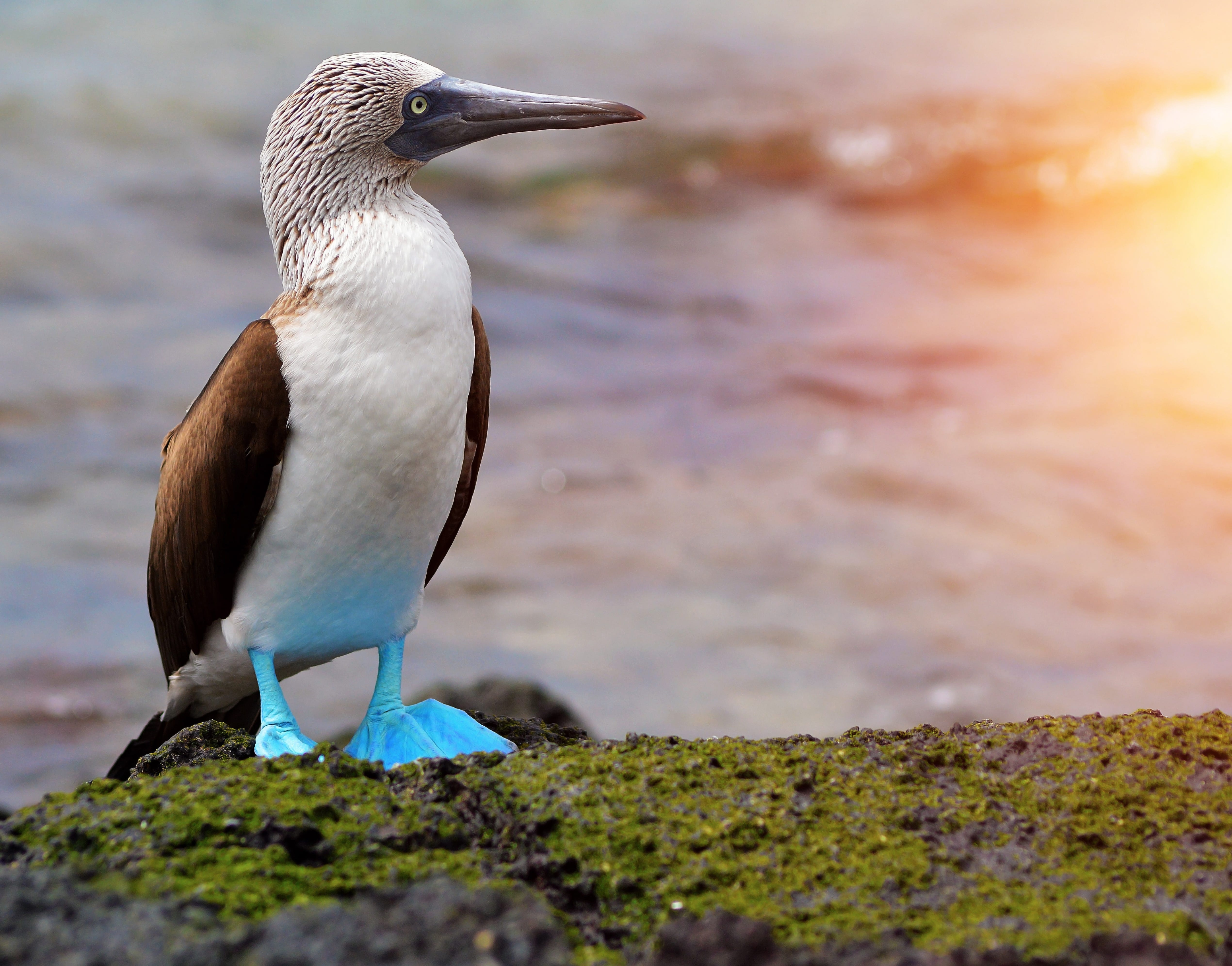The blue-footed booby (Sula nebouxii) is a marine bird native to subtropical and tropical regions of the eastern Pacific Ocean.
It is one of six species of the genus Sula – known as boobies.
It is easily recognizable by its distinctive bright blue feet, which is a sexually selected trait.
KINGDOM:- Animalia
PHYLUM:- Chordata
CLASS:- Aves
ORDER:- Suliformes
FAMILY:- Sulidae
GENUS:- Sula
SPECIES:- S.nebouxil

https://medium.com/wildark-journal/birdlyfe-the-blue-footed-booby-7c4f5cd2bc58
Size & Shape
- A large seabird with a heavy, long, pointed bill, long, pointed wings, and relatively long tail.
RELATIVE SIZE
Larger than a Great Black-backed Gull, smaller than a Northern Gannet.


MEASUREMENTS
- Both Sexes
- Length: 31.9 in (81 cm)
- Weight: 52.9-77.6 oz (1500-2200 g)
- Wingspan: 62.2 in (158 cm)
Color Pattern
Brownish above and whitish below, with a white patch on the hindneck and a narrow white band across the rump. Adults have brilliantly blue feet and grayish-brown streaking on pale head and neck. Young birds have brown feet and darker brown streaking on the head, neck, and chest.
- Behavior
- Blue-footed Boobies spend much of the day fishing, often in flocks. They patrol by flying over the water, then dive rapidly and often from great heights to catch fish they find. They spend the remainder of the day resting on the water or a convenient perch (piling, buoy, rock, etc.) and preening.
- Habitat
Food
Blue-footed Boobies eat mostly fish and squid. Anchovies, sardines, mackerel, flying fish, and other small fish form most of the diet; the larger female boobies take larger fish, on average, than males and can dive more deeply than males. Blue-footed Boobies catch fish by diving during daylight hours. From heights of up to 80 feet in the air, they dive as deep as 65 feet (15 feet is a more typical diving depth). Even when going after discards from fishing boats, these birds usually dive to catch the offal, plunging beneath the food and snapping it up in the bill as they ascend in the water.
Nesting
NEST PLACEMENT
The nest is set on the ground in a flat sandy or rocky coastal area.
NEST DESCRIPTION
The nest is a bowl-shaped scrape ringed by feces, called guano.
NESTING FACTS
| Clutch Size: | 1-3 eggs |
| Egg Description: | Pale bluish. |
| Condition at Hatching: | Helpless with little down. |
THERE ARE MORPHOLOGICAL DIFFERENCES BETWEEN THE ADULTS AND THE IMMATURE BOOBIES
ADULTS
- Large, heavy bodies seabirds with a long daggerlike bill.
- Adults have distinctive blue feet and dark bills.
- Nests on the ground on islands.
- Forages at sea.
- large, heavy-bodied seabirds with a long dagger-like bill.
- Immatures are dark overall, with variable amounts of white mottling on the back.
- Paler head and white belly.
- The underwings are mostly dark.
- They have large pointy wings that help in flight.
- Immatures are mostly brown in color with a dark bill and often roost on rocky islands.
THAT IS IT FOR THIS WEEK!!HAVE A GOOD READ!


Nice one
ReplyDeleteTHANK YOU!!
Delete